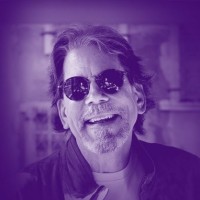We fear change because we cannot anticipate the outcome.
“Will you know how to pivot and thrive, or will you be roadkill in the ‘adapt or die’ business race?” Say, Scott Smith and Madeline Ashby, futurists, in their book, How to Future.
Change or Be Changed. Disrupt or Be Disrupted.
Organizations do not make people—People make organizations.
Organizations do not change—People change.
COVID-19 is altering the nature and speed of change taking place in businesses or organizations—the urgency of necessary transitions, including preparing for radical, eruptive change regularly—for constant reinvention.
Unforeseen pain points (adapt or die) or inflection points (pivot and thrive) are coercing businesses or organizations to identify agile, unconventional, and creative strategies and tactics to respond to change resistance or change readiness.
Bad things happen when we stop solving “people problems” and start solving only “business ones.”
“We cannot lead our teams,” Max Heiliger says, “to worship a torch because we think it is the sun.”
This reality (and navigating through it) requires a new understanding of flexibility, adaptation, adoption, resilience, and vulnerability.
Success and failure in a business or organization—pivot on human behavior and reasoning—what people do, how they do it, and especially why they do it.
Fear is only as deep, a Japanese proverb tells us, as the mind allows.
Logic is often slow. Fear is not.
Engaging the workforce in authenticity and transparency—facts and prospects for the future, make the unknown, known, and likewise, less frightening.
When people see and understand the genuine merits of a change?
This clarity leads to psychological shifts and authentic behavior transformation to support a change more openly and willingly—a change that sticks!
Here in this series are an approach and a range of strategies and tactics for doing so.
Likewise, using tools, practices that illuminate fresh strategic pathways for developing sensemaking and human-centricity in the decisions, and outlook for your business or organization.
Moreover, these decisions and outlook are grounded on applying concepts that begin developing future-focused mental modeling (new maps and mental models) and sensemaking, mindshare, and mindscapes.
That helps you discover and prepare for informed and agile strategic planning post-pandemic.
And help you begin collaborating and partnering on—promoting leading for radical human-centricity—whole-person development where the future of work calls for human-centric leadership and ‘people-tech system development.’

